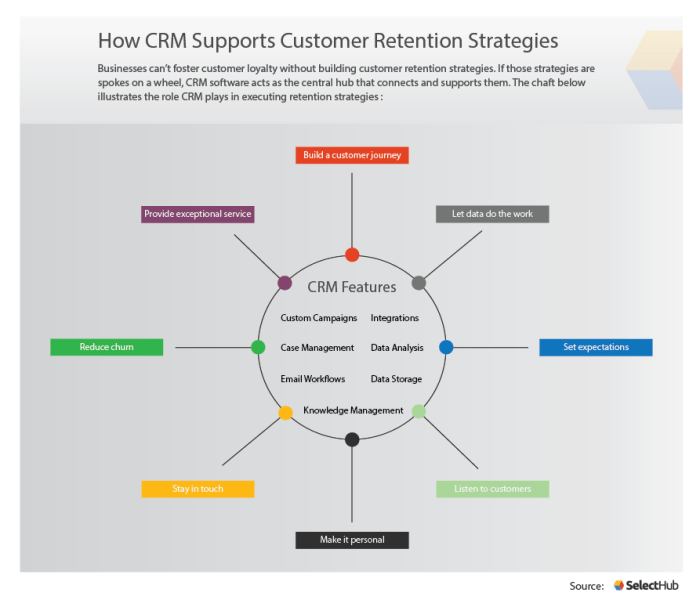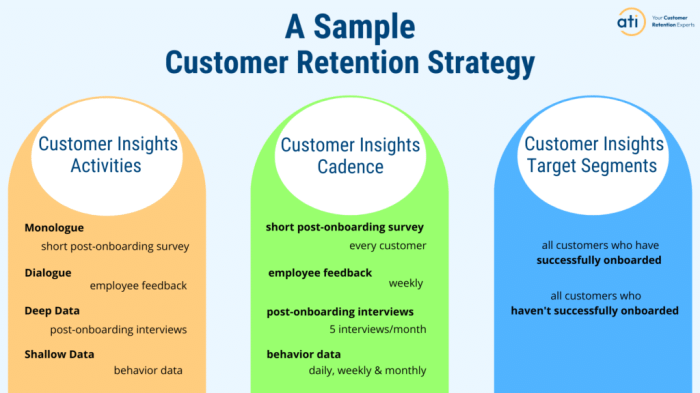Building a Customer Retention Strategy takes center stage, inviting readers into a world of business expertise and innovation. Get ready to dive into the key elements that drive customer loyalty and satisfaction.
Overview of Customer Retention Strategy
A customer retention strategy is a plan put in place by businesses to retain existing customers and ensure their continued loyalty. It focuses on maintaining strong relationships with customers to encourage repeat business and prevent them from switching to competitors.Implementing a robust customer retention strategy is crucial for businesses as it can lead to increased customer satisfaction, higher customer lifetime value, and ultimately, higher profitability.
By focusing on retaining existing customers, businesses can save on acquisition costs and benefit from the positive word-of-mouth marketing that loyal customers provide.
Examples of Successful Companies with Effective Customer Retention Strategies
- Amazon: Amazon’s Prime membership program offers various benefits like free shipping, streaming services, and exclusive deals, keeping customers engaged and coming back for more.
- Apple: Apple’s focus on product quality, customer service, and creating a seamless user experience has helped them build a loyal customer base that keeps coming back for their products.
- Zappos: Zappos is known for its exceptional customer service, hassle-free return policy, and personalized shopping experience, which have all contributed to high customer retention rates.
Understanding Customer Behavior

Understanding customer behavior is crucial when developing a retention strategy because it allows businesses to tailor their approach to meet the needs and preferences of their customers. By analyzing how customers interact with their products or services, businesses can identify patterns and trends that can help improve customer loyalty and retention.
Importance of Data Analytics and Customer Feedback
Data analytics and customer feedback play a vital role in understanding customer preferences. By collecting and analyzing data on customer behavior, businesses can gain valuable insights into what drives customer satisfaction and loyalty. Customer feedback, whether through surveys, reviews, or social media interactions, provides direct insights into what customers like or dislike about a product or service.
- Utilizing data analytics to track customer interactions on a website can help businesses identify popular products or services, as well as areas for improvement.
- Analyzing customer feedback can help businesses address common pain points or concerns, leading to increased customer satisfaction.
Examples of Enhancing Customer Retention, Building a Customer Retention Strategy
- A retail company used data analytics to identify that customers who received personalized recommendations were more likely to make repeat purchases. By implementing a personalized recommendation system, the company saw an increase in customer retention rates.
- A subscription-based service analyzed customer feedback to discover that users preferred a mobile app over a web platform. By focusing on improving the mobile app experience, the company was able to retain more customers and reduce churn rates.
Creating Personalized Customer Experiences

Personalized customer experiences play a crucial role in customer retention by making individuals feel valued and understood.
Tailoring Products/Services to Individual Customer Needs
One method for creating personalized experiences is tailoring products or services to meet the specific needs and preferences of each customer.
- Utilizing customer data to understand their past purchases and preferences.
- Offering personalized recommendations based on their browsing history or previous interactions.
- Providing customization options for products/services to suit individual tastes.
Case Studies of Companies Excelling in Personalized Experiences
Several companies have excelled in providing personalized experiences to enhance customer retention rates.
Amazon’s personalized product recommendations based on browsing history and purchase behavior have significantly increased customer loyalty and repeat purchases.
Netflix’s tailored movie and show suggestions have kept subscribers engaged and satisfied, reducing churn rates.
Starbucks’ rewards program, offering personalized discounts and freebies based on individual preferences, has led to higher customer retention and increased spending.
Implementing Loyalty Programs: Building A Customer Retention Strategy
When it comes to building a customer retention strategy, loyalty programs play a crucial role in keeping customers engaged and coming back for more. These programs offer incentives for repeat business, creating a sense of value and appreciation for loyal customers.
Types of Loyalty Programs
- Points-Based Programs: Customers earn points for purchases, which can be redeemed for rewards or discounts. This encourages repeat purchases to accumulate more points.
- Tiered Loyalty Programs: Customers unlock different levels of perks and benefits based on their spending or engagement with the brand. This motivates customers to reach higher tiers for exclusive rewards.
- Discount Programs: Offering exclusive discounts or deals to loyal customers can incentivize them to continue shopping with the brand to access these special offers.
Designing a Successful Loyalty Program
- Understand Your Customers: Tailor your loyalty program to fit the preferences and behaviors of your target audience to ensure it resonates with them.
- Make it Easy to Join: Simplify the sign-up process and make it seamless for customers to enroll in the loyalty program to increase participation.
- Offer Valuable Rewards: Provide rewards that are meaningful and desirable to your customers to motivate them to continue engaging with your brand.
- Promote Your Program: Utilize various marketing channels to raise awareness about your loyalty program and its benefits to attract new members.






